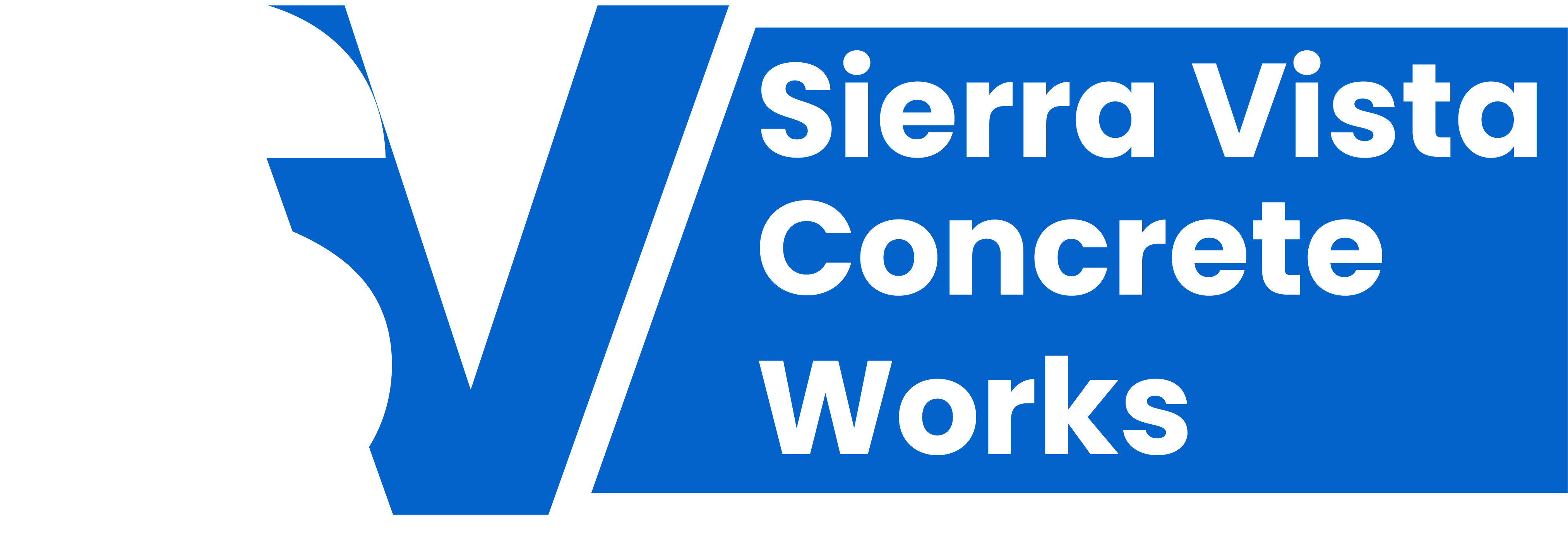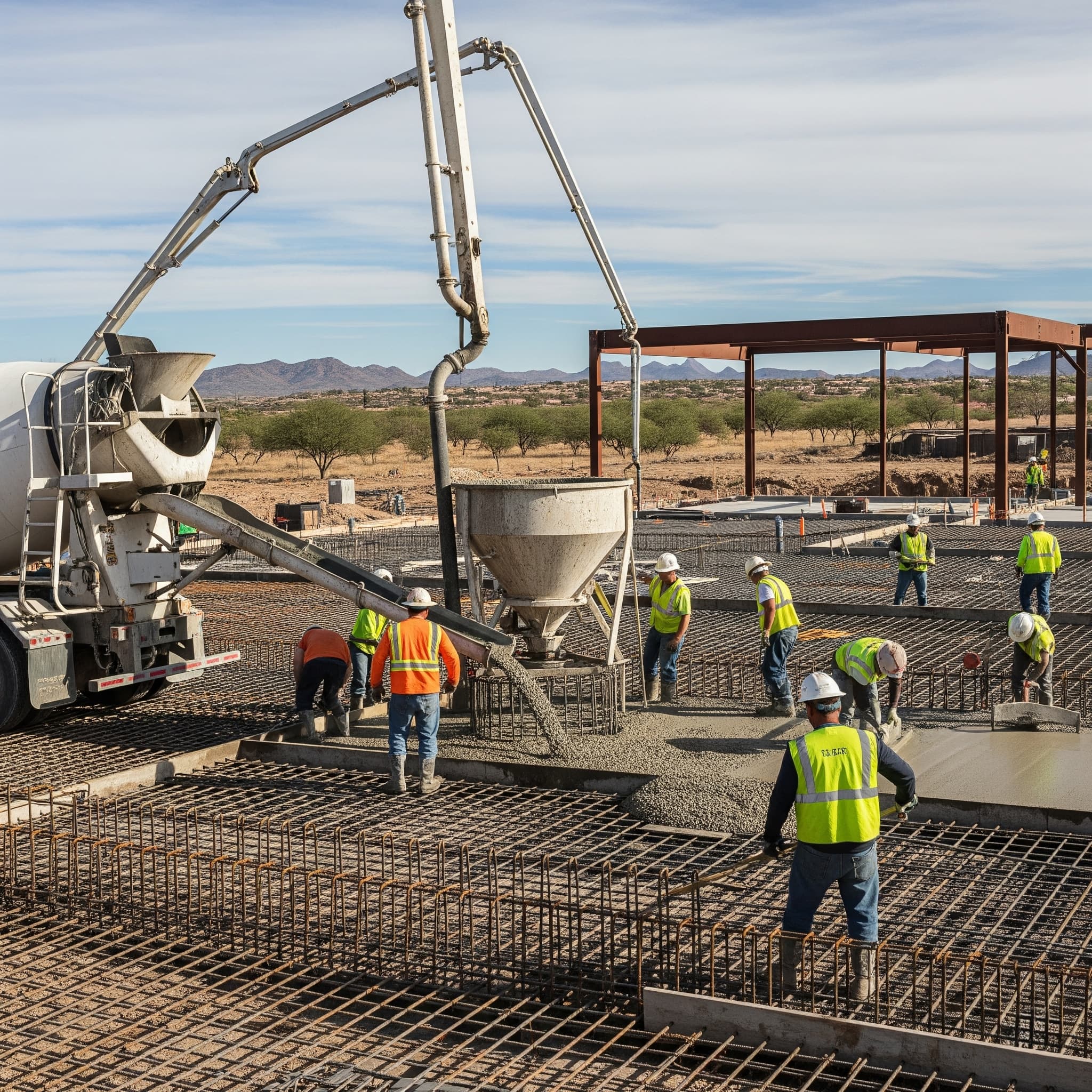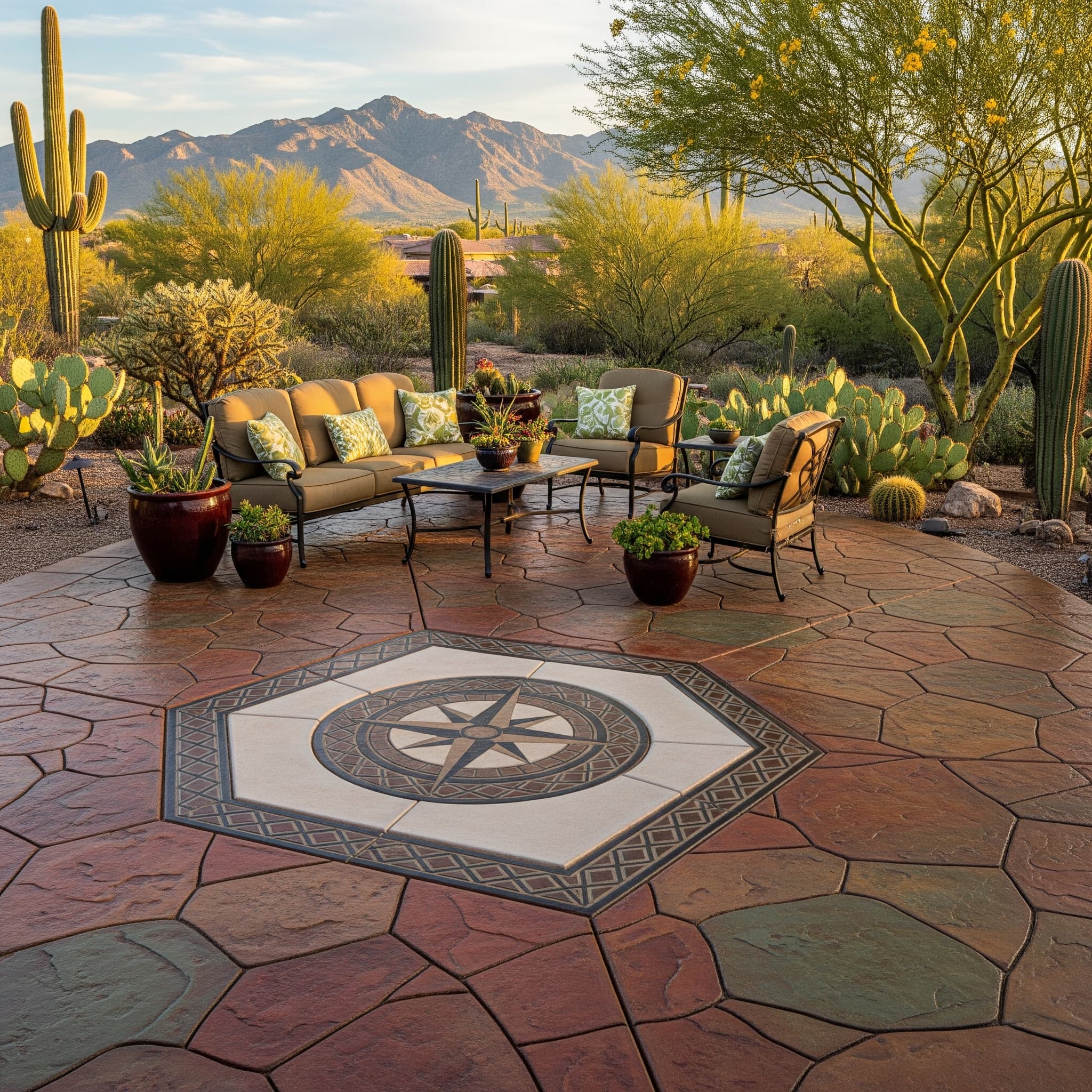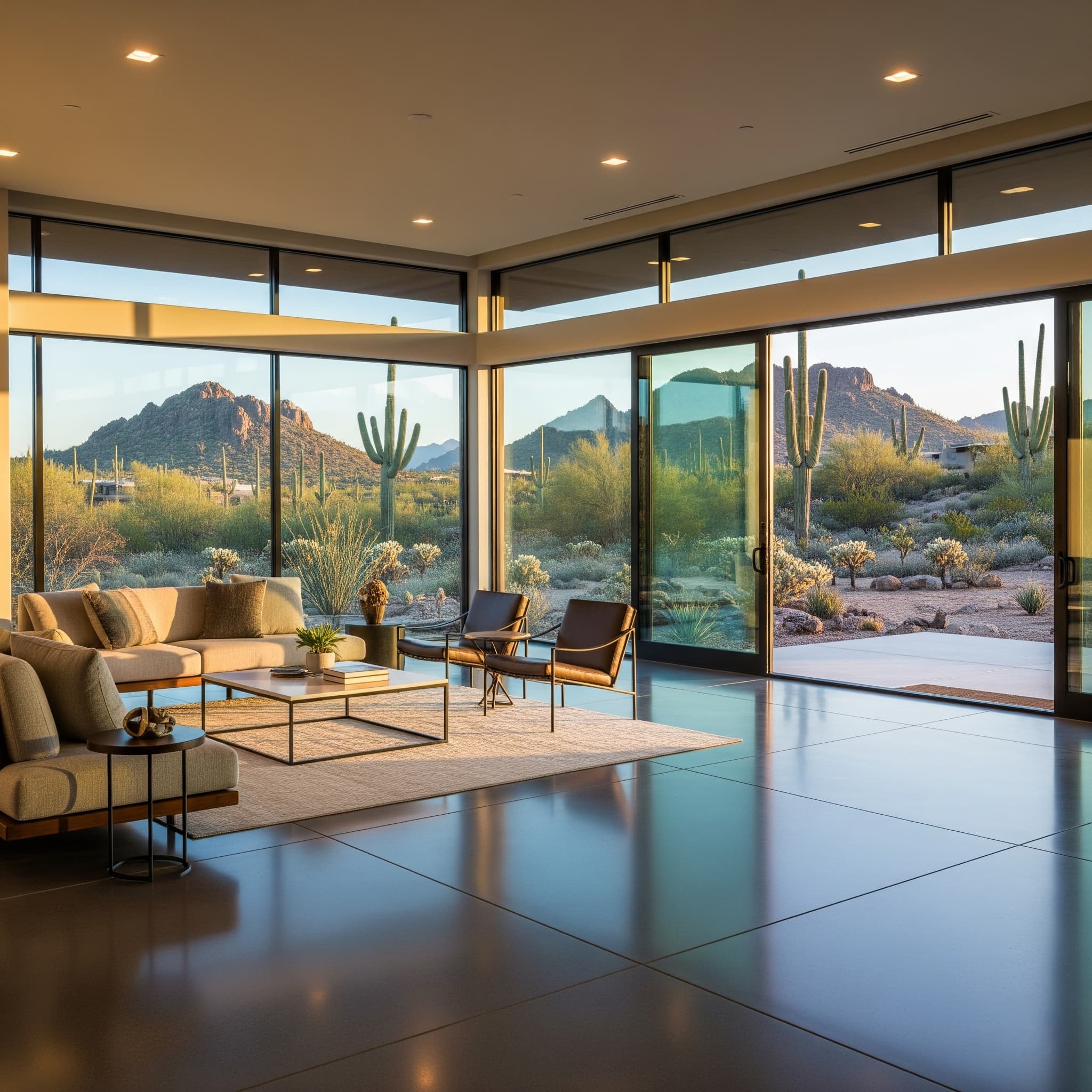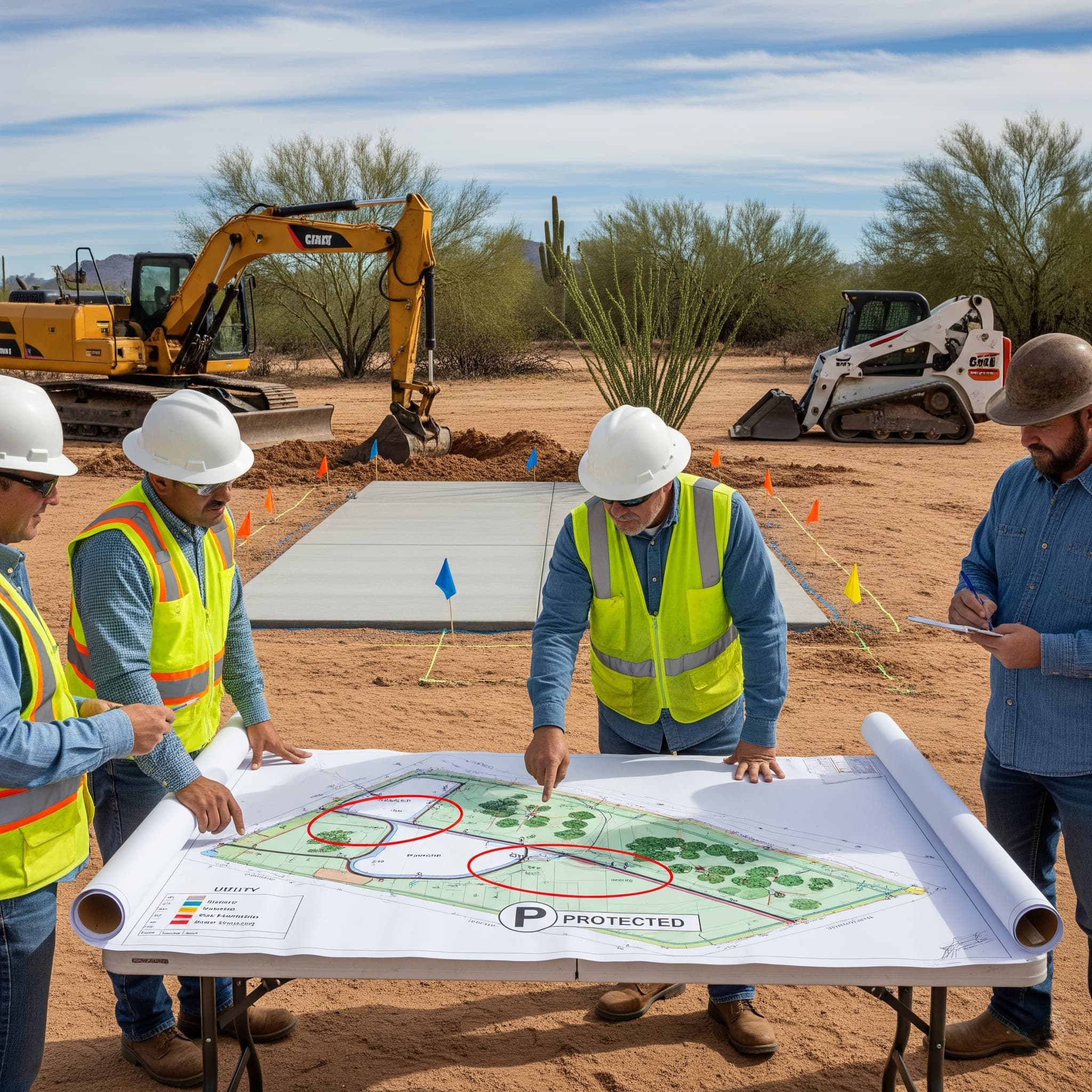
Floating vs Monolithic Slabs: Which Fits Your Sierra Vista Project?
Concrete Slab Sierra Vista
Choosing between floating and monolithic concrete slab foundations represents a critical decision that affects both project costs and long-term performance in Sierra Vista’s unique environment. Understanding the fundamental differences between these foundation types helps property owners make informed decisions based on soil conditions, project requirements, and budget considerations. Arizona’s desert climate, temperature extremes, and specific soil characteristics create unique challenges that influence which foundation type performs best for different applications. Local building codes, utility requirements, and seasonal weather patterns further impact the optimal choice for residential and commercial projects. Professional evaluation ensures your foundation selection provides maximum value and structural integrity for decades to come.
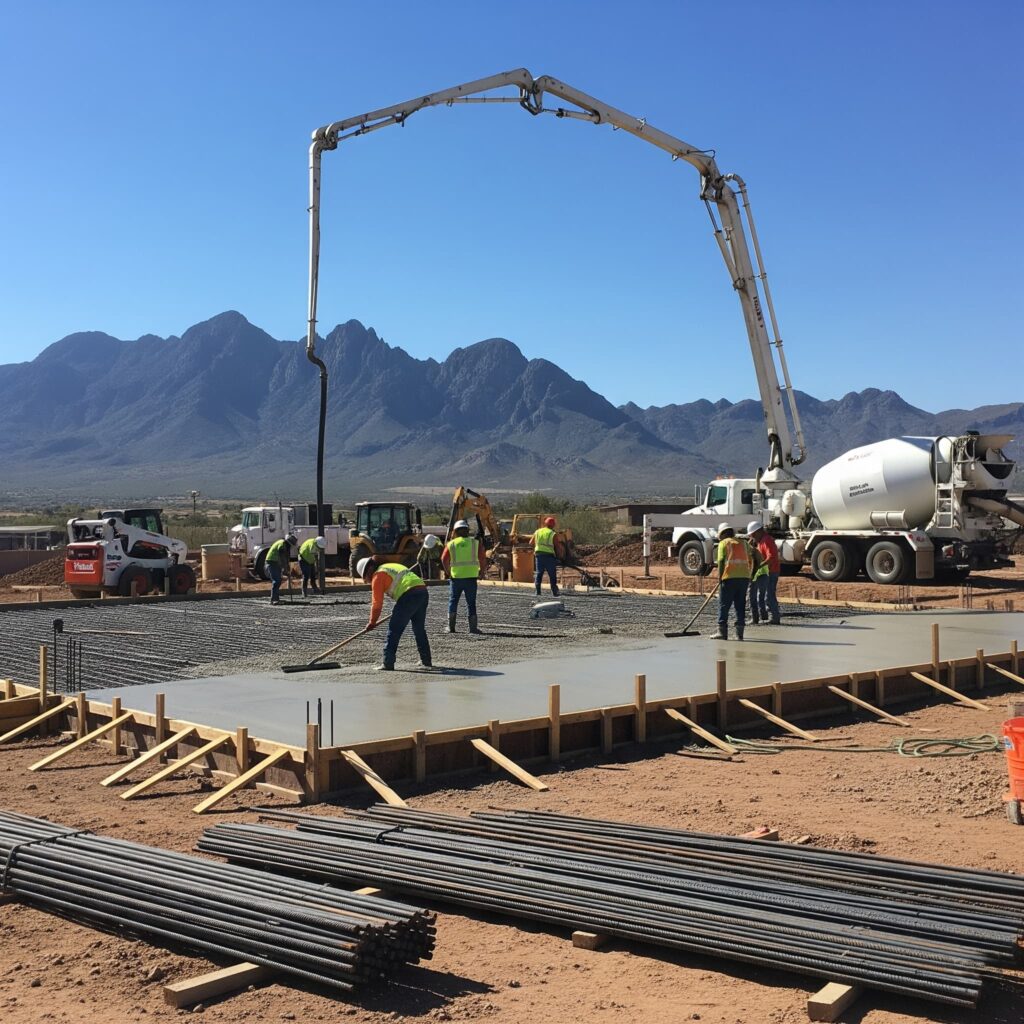
Understanding Floating Concrete Slab Foundations
A floating concrete slab sits directly on prepared soil without deep footings, essentially “floating” on the ground surface like a large concrete pad. This foundation type relies on properly compacted soil and reinforcement to distribute structural loads across a wide surface area. Floating slabs typically include thickened edges for additional strength and may incorporate insulation to manage temperature effects. The construction process involves minimal excavation, making it cost-effective for appropriate applications. However, floating slabs depend heavily on stable soil conditions and proper drainage to prevent settlement or movement issues over time.
Exploring Monolithic Slab Construction
Monolithic slabs combine the foundation footing and floor slab into a single continuous pour, creating an integrated structural unit. This design includes thickened perimeter edges that extend below the frost line, providing superior stability compared to floating alternatives. The entire foundation gets poured simultaneously, reducing construction time while creating strong structural connections throughout. Monolithic construction requires more extensive site preparation and formwork but delivers enhanced load-bearing capacity. This foundation type performs particularly well in areas with challenging soil conditions or where maximum structural integrity is required.
Sierra Vista Soil Conditions and Foundation Selection
Sierra Vista’s diverse soil conditions significantly influence foundation performance, with areas near the Huachuca Mountains featuring different characteristics than lower valley locations. Expansive clay soils common throughout Cochise County can cause significant movement that affects foundation stability. Rocky terrain near Fort Huachuca or Garden Canyon may require specialized excavation techniques that impact foundation choices. Properties with stable, well-draining soils often perform well with floating slabs, while areas prone to settlement or heaving benefit from monolithic designs. Professional soil testing helps identify specific conditions that determine optimal foundation selection for each site.
Cost Analysis and Budget Considerations
Floating slabs typically cost $6-11 per square foot in Sierra Vista, while monolithic foundations range from $8-15 per square foot, depending on complexity and site conditions. Material costs differ significantly, with floating slabs requiring less concrete and reinforcement than monolithic alternatives. Labor expenses vary based on site preparation requirements, with monolithic slabs demanding more extensive formwork and skilled installation. Equipment needs may favor floating slabs for simple installations, while monolithic foundations require more specialized tools and techniques. Long-term value considerations include durability, maintenance requirements, and potential repair costs over the foundation’s lifespan.
Climate Considerations for Arizona Projects
Arizona’s extreme temperature fluctuations create unique challenges that affect foundation performance throughout Sierra Vista. Daily temperature swings can cause significant concrete expansion and contraction that impacts different foundation types differently. Intense UV exposure affects surface concrete differently on floating versus monolithic installations. Monsoon seasons bring moisture challenges that test drainage systems and soil stability around foundation perimeters. Winter freezing temperatures, though infrequent, can affect shallow foundations more than deeper monolithic installations. Proper design accounts for these climate factors to ensure long-term foundation performance.
Applications and Project Suitability
Floating slabs excel for garages, workshops, storage buildings, and other structures where cost-effectiveness and quick installation are priorities. Residential patios, sidewalks, and small commercial buildings often benefit from floating slab construction when soil conditions permit. Monolithic foundations better suit permanent structures, homes, and buildings requiring maximum stability and load-bearing capacity. Heavy equipment installations, multi-story construction, and critical infrastructure typically demand monolithic foundation systems. Project timeline, load requirements, and intended use determine which foundation type provides optimal performance for specific applications.
Installation Process and Timeline Differences
Floating slab installation typically requires 3-7 days from site preparation through final curing, depending on project size and weather conditions. Site preparation involves basic grading, compaction, and utility rough-in before concrete placement. Monolithic slab construction extends to 7-14 days due to complex formwork requirements and deeper excavation needs. The integrated footing system requires careful coordination of reinforcement placement and concrete pouring sequences. Weather delays impact both foundation types, but monolithic installations face greater scheduling complexity. Professional contractors adjust timelines based on specific site conditions and project requirements.
Performance and Durability Factors
Properly installed floating slabs can provide 20-30 years of reliable service when soil conditions remain stable and drainage functions effectively. Settlement risks increase when underlying soil conditions change or inadequate site preparation occurs during installation. Monolithic slabs typically deliver 30-50 years of service life due to their integrated design and deeper foundation elements. Structural integrity remains superior in monolithic installations, particularly when facing soil movement or significant load changes. Both foundation types require proper maintenance, sealing, and drainage management to achieve maximum lifespan in Arizona’s challenging climate.
Utility Integration and Access Considerations
Floating slabs provide easier access for utility modifications and repairs since pipes and conduits typically run beneath the thinner slab section. Post-installation utility changes present fewer challenges and lower costs with floating slab designs. Monolithic slabs require more careful utility planning since modifications involve cutting through thicker, reinforced concrete sections. Electrical, plumbing, and HVAC systems need precise coordination during monolithic slab installation to avoid future access issues. Both foundation types benefit from proper sleeves and planning during initial construction to accommodate future utility needs.
Local Code Requirements and Permits
Sierra Vista building codes specify minimum foundation requirements based on structure type, occupancy, and soil conditions determined through professional evaluation. Floating slabs may face restrictions for certain applications or require engineered designs when soil conditions warrant additional analysis. Monolithic foundations typically meet code requirements for most residential and commercial applications without special considerations. Permit costs vary based on foundation type and project complexity, with monolithic installations sometimes requiring additional engineering documentation. Professional contractors understand local code requirements and help navigate the permit process for either foundation type.
Making the Right Choice for Your Project
Successful foundation selection requires careful evaluation of soil conditions, project requirements, budget constraints, and long-term performance expectations. Sites with stable soil, moderate loads, and cost-sensitive budgets often favor floating slab construction. Projects requiring maximum durability, heavy load support, or challenging soil conditions typically benefit from monolithic foundation systems. Professional assessment includes soil testing, structural analysis, and cost-benefit evaluation to determine optimal foundation selection. Climate considerations, utility requirements, and local building codes further influence the decision-making process for Sierra Vista projects.
Expert Foundation Analysis with Sierra Vista Concrete Works
Selecting the optimal concrete slab foundation requires expertise in local soil conditions, building codes, and construction techniques specific to Sierra Vista’s challenging environment. Our team provides a comprehensive analysis of site conditions, project requirements, and cost considerations to recommend the most suitable foundation type. We understand the performance characteristics of both floating and monolithic slabs in Arizona’s desert climate and help clients make informed decisions. Sierra Vista Concrete Works delivers professional installation services for both foundation types, ensuring your project receives the most appropriate foundation solution for long-term success and value.
